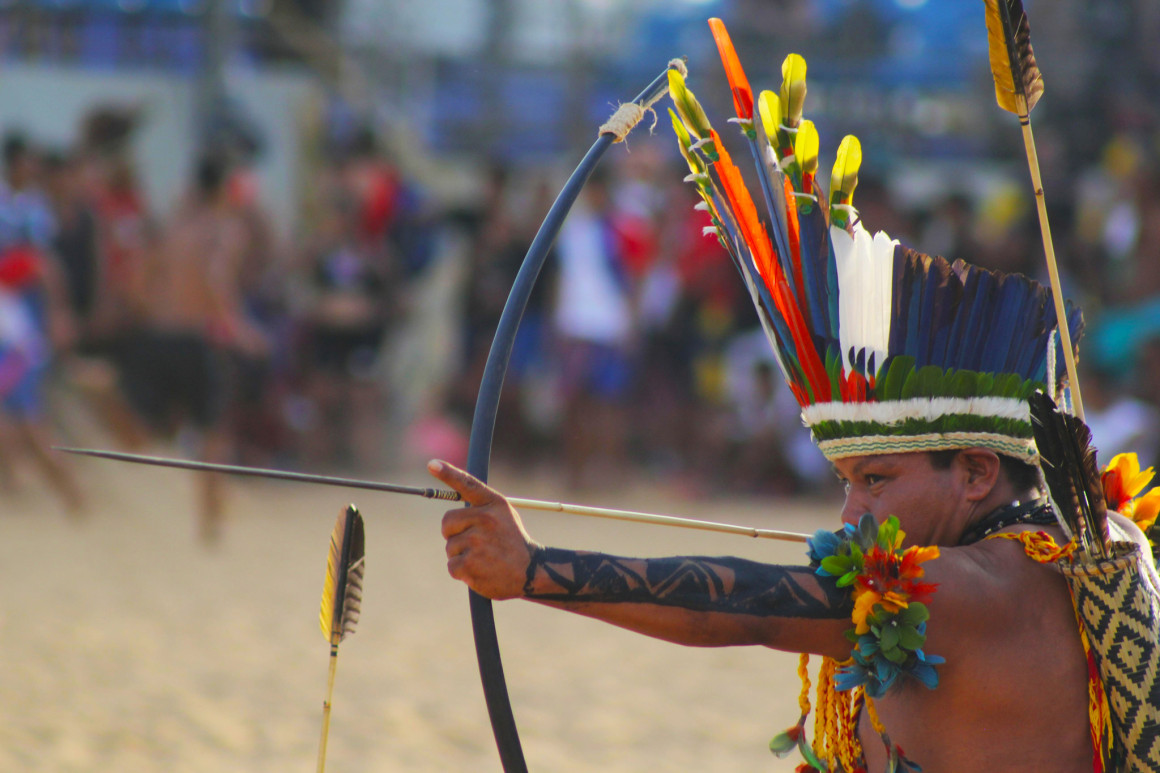
World Indigenous Games changing sports culture
By Emilie Medland-Marchen, November 3 2015 —
The inaugural iteration of the World Indigenous Games (WIG) took place this year in Palmas, Brazil from Oct. 23 to Nov. 1, highlighting notable changes occurring in sporting culture.
The event featured over 2,000 athletes from 22 countries, including Canada, putting their skills to the test in both well-known events like wrestling and traditional events like the spear toss and xikunahity — a game similar to soccer where players move on all fours while keeping the ball off the ground with their heads.
The 2015 WIG is the largest of its kind at the international level. The North American Indigenous Games have taken place since 1990, but the WIG took the next step by staging a similar event on a global scale.
However, despite the event’s notable size, it went uncovered by the majority of major news outlets. Al Jazeera and VICE Sports both sent correspondents to report on it, while the CBC briefly mentioned a Canadian athlete sent to compete at the Games. But compared to the other notable global events like the Summer and Winter Olympic games, it’s fair to say the Indigenous Games went fairly unnoticed.
This may be because the event is only in its first year. However, it’s also struggling to get off the ground because of a growing conversation about what constitutes a sport — whether things like the spear toss and tug of war can be considered true sport events in a major international arena.
New events are being added to the Summer and Winter Olympic Games rosters each time they come around. Golf and rugby sevens have been added to the 2016 Summer Games and mass-start speed skating has been voted into the 2018 Winter Olympics.
Sports are voted into the Games through a complex process that takes place within the International Olympic Committee (IOC). Considerations of the sport are taken into account, including the competitiveness and pool of athletes available to compete. The sport must also meet criteria outlined by the IOC.
Obviously, change does not come easily. Considering these factors, it would be incredibly difficult for events like the corrida de tora — where participants race while carrying small logs — to be included in the Summer Olympic Games. There is a long legacy at play within the Olympics, and given the difficulty of including sports like basketball and ski jump in the Games, it’s unlikely that a change would come any time soon. Because of these factors, the idea to start an independent Indigenous tournament that includes these sports is an excellent choice.
The WIG brings athletes together from all over the world to celebrate Indigenous culture, and provides opportunities for the next generation of Indigenous populations to get involved in high-level, high-performance sport.
Sports can play a key role in building communities, especially in a diverse international arena that aims to include athletes from across the globe.
Funding and recognition remain key problems with starting up a new tournament. This particular competition was plagued by a series of protests in Brazil that criticized hosting an international sporting event in the wake of the country’s severe poverty. Similar protests took place during the FIFA World Cup last year, and will likely continue in 2016 when the country hosts the Summer Olympics.
Despite those difficulties, the Indigenous Games went on. But it’s unfortunate that the events weren’t televised by major media outlets.
Events like xikunahity are incredibly athletically gruelling and there’s no question of their difficulty and legitimacy as a sport. But our established perceptions of sport — what it constitutes and who can play — are arbitrary. They’re also limiting and not particularly diverse.
Should the WIG be able to overcome these challenges, find a steady stream of funding and a growing number of athletes for competition, it should blossom into an excellent opportunity to include global athletes in high-level competitive sporting events.
But this starts with a change in the public’s perception. Making competitive sports more diverse and inclusive starts with a right to play, and that’s something everyone should have.
